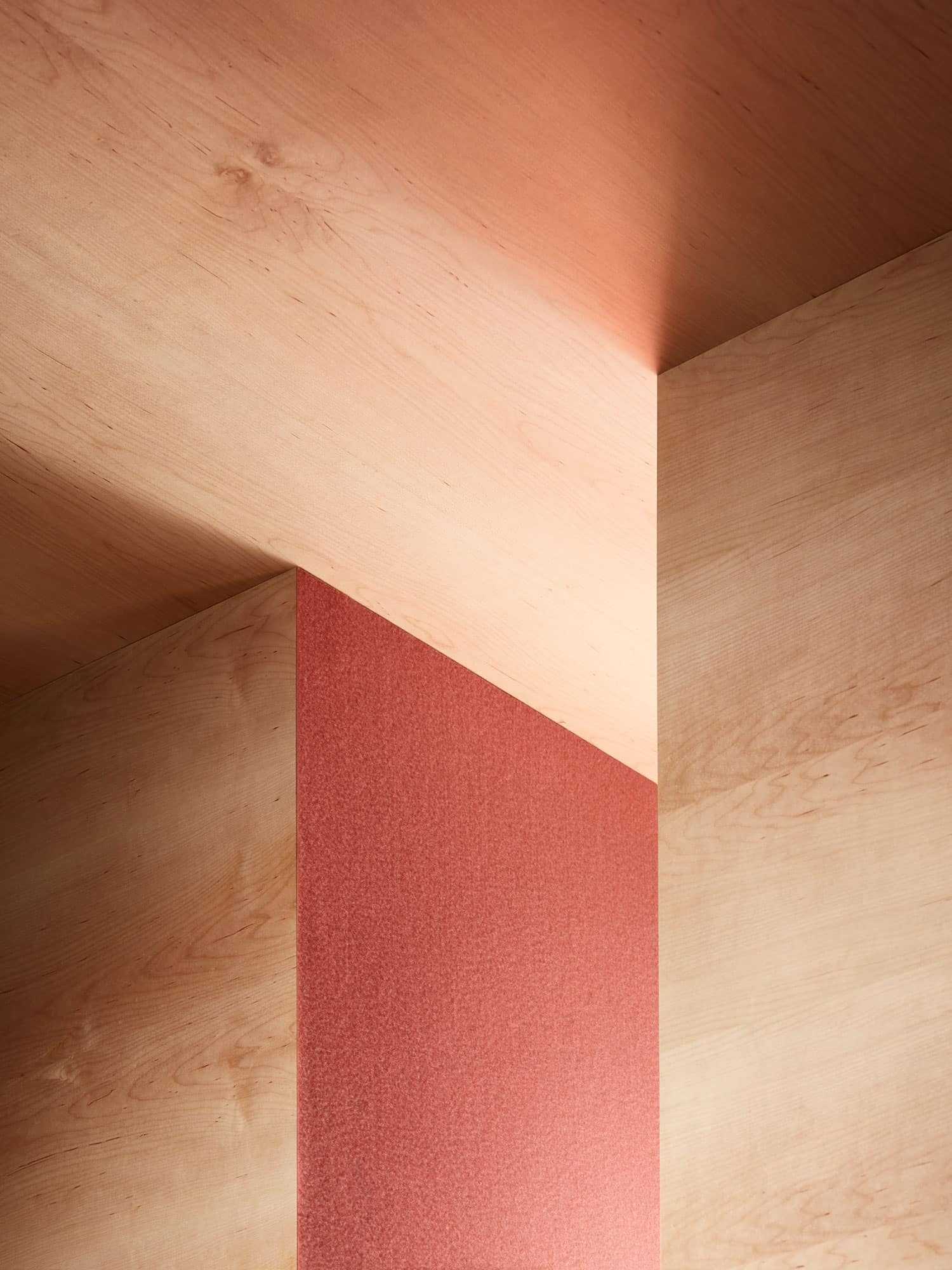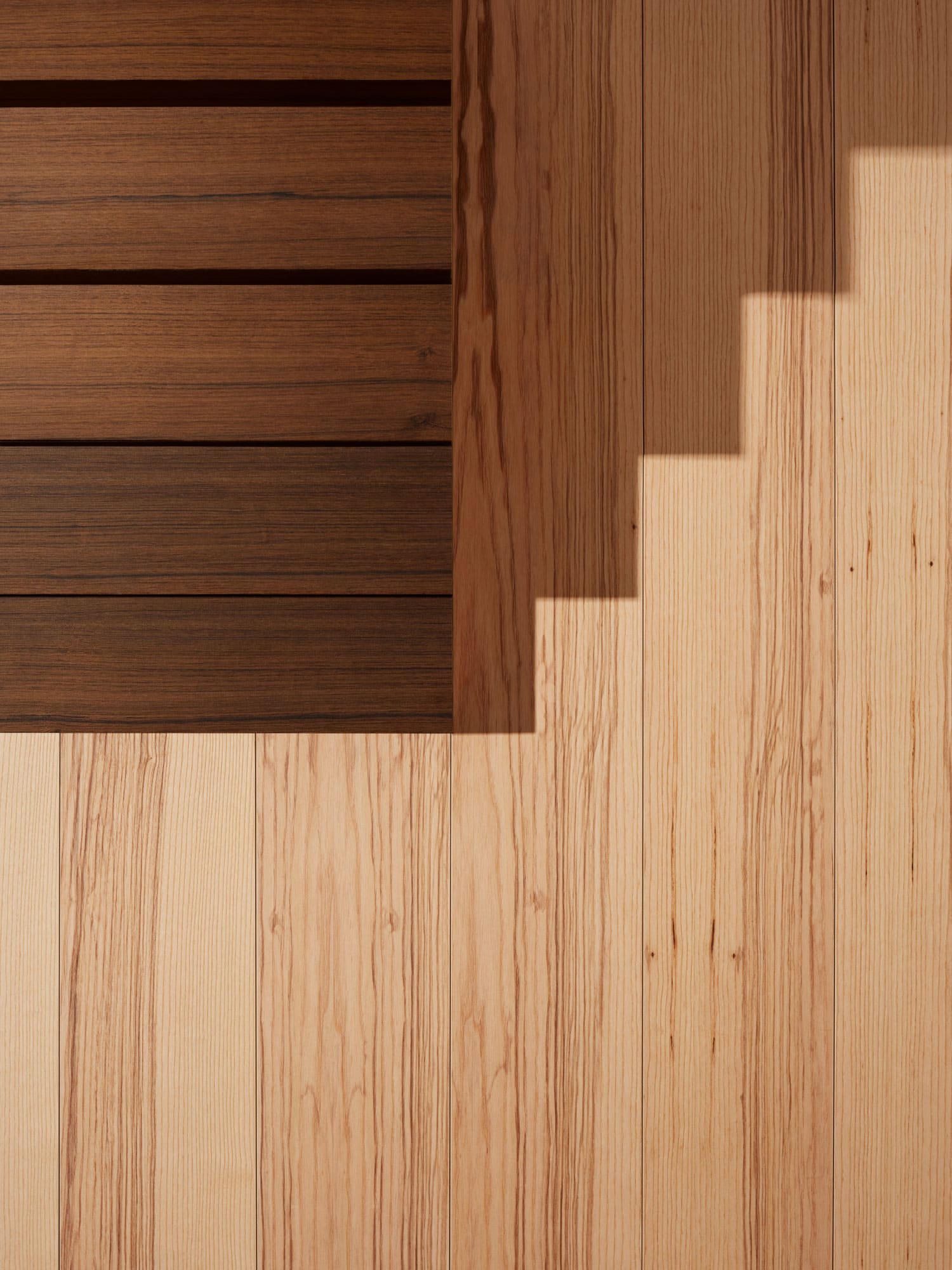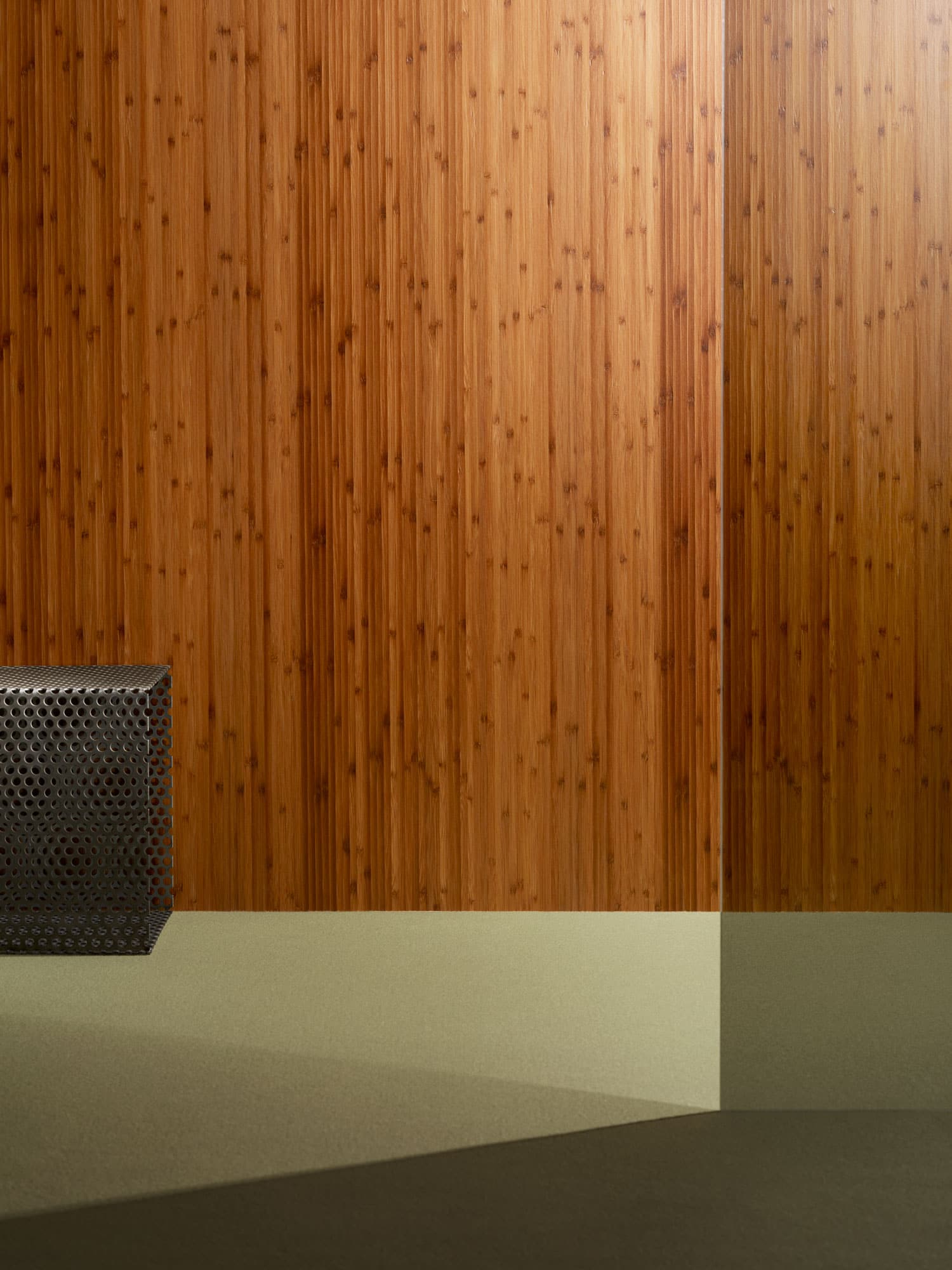TABLE OF CONTENTS
- 1. Introduction to Exterior Wood Cladding
- 2. Evolution of Wood Cladding in Contemporary Architecture
- 3. Technical Fundamentals of Exterior Wood Cladding
- 4. Exterior Wood Cladding Systems
- 5. Technical Considerations for Specification and Installation
- 6. Durability and Maintenance
- 7. Case Studies and Architectural Applications
- 8. Innovation and Future of Exterior Wood Cladding
- 9. Technical Resources for Architects
- 10. Frequently Asked Questions about Natural Exterior Wood Cladding
1. Introduction to exterior wood cladding
The integration of natural wood into contemporary architecture represents one of the greatest challenges and opportunities for industry professionals. As an ancestral construction material, wood connects our designs with a millennia-old tradition, bringing warmth, expressiveness, and authenticity to architectural spaces. However, its use in exterior cladding has historically been limited by concerns related to durability, maintenance, and performance under adverse weather conditions.
At Parklex Prodema, we have spent decades researching, developing, and implementing solutions that overcome these traditional limitations, enabling architects to harness the full aesthetic and functional potential of natural wood in facades and other exterior cladding applications without compromising durability or increasing maintenance demands.
This technical guide has been specifically designed for architects and industry professionals seeking to incorporate the timeless beauty of wood into their exterior projects, with the assurance of superior technical performance and certified sustainability. Here, we will cover everything from conceptual and technical fundamentals to practical applications and specific solutions for various architectural contexts.

2. Evolution of wood cladding in contemporary architecture
2.1. From traditional material to technological innovation
Wood has been a fundamental construction material throughout the history of architecture. Its natural characteristics of warmth, versatility, and local availability have made it a constant presence in buildings across nearly all cultures. However, in the context of exterior construction, natural wood presented significant limitations in terms of durability and maintenance, which restricted its widespread use in facades and other cladding exposed to the elements.
Technological advancements in wood treatment and processing have revolutionized these possibilities. Innovations developed over recent decades have overcome traditional constraints, offering solutions that preserve the natural beauty and warmth of wood while effectively addressing the technical challenges associated with outdoor exposure.
2.2. Current trends in exterior wood cladding
Contemporary architecture is experiencing a renewed interest in exterior wood cladding, driven by several factors:
- Connection with nature: In an increasingly urbanized world, biophilia and the incorporation of natural elements into the built environment are gaining greater relevance.
- Commitment to sustainability: As a renewable material with carbon sequestration capabilities, wood represents a sustainable alternative to materials with a higher ecological footprint.
- Technical advancements: Innovations in wood processing and treatment have significantly improved its performance in outdoor conditions.
- Architectural expressiveness: Wood offers unique aesthetic qualities that allow architects to create facades with distinctive character and emotional resonance.
This convergence of factors has positioned exterior wood cladding as a high-value solution, both aesthetically and technically, in architectural projects of varying scales and typologies.
3. Technical fundamentals of exterior wood cladding
3.1. Behavior of wood in outdoor conditions
As an organic material, wood constantly interacts with its environment. In outdoor conditions, it is exposed to various factors that affect its behavior and durability:
- Moisture and drying cycles: Wood’s hygroscopic nature means it absorbs and releases moisture based on environmental conditions, which can cause dimensional changes.
- Ultraviolet radiation: UV rays degrade the lignin in wood, leading to changes in its coloration and, over time, its surface mechanical properties.
- Biological factors: Fungi, insects, and other organisms can affect untreated wood in humid conditions.
- Atmospheric pollution: In urban or industrial environments, pollutants can accelerate degradation processes or impact the cladding’s aesthetic appearance.
Understanding these interactions is essential for developing technical solutions that enable the use of wood in exterior applications with guarantees of durability and minimal maintenance.
3.2. Technological innovations in exterior wood cladding
The traditional limitations of wood in exterior applications have been addressed through various technological innovations:
- Advanced treatments: From deep impregnation to chemical modifications of the wood’s cellular structure, these processes significantly enhance dimensional stability and resistance to degrading factors.
- Technical natural wood panels: Combining natural wood with other materials preserves its characteristic aesthetic while improving specific properties.
- High-tech coatings: Next-generation protective films safeguard the wood without concealing its natural texture and grain.
- Specialized fastener systems: Designed to adapt panels to various subframes and accommodate the material’s natural movements without compromising the integrity of the assembly.
At Parklex Prodema, we have developed proprietary solutions that integrate these innovations, enabling us to offer natural wood cladding with exceptional performance guarantees in demanding outdoor conditions.
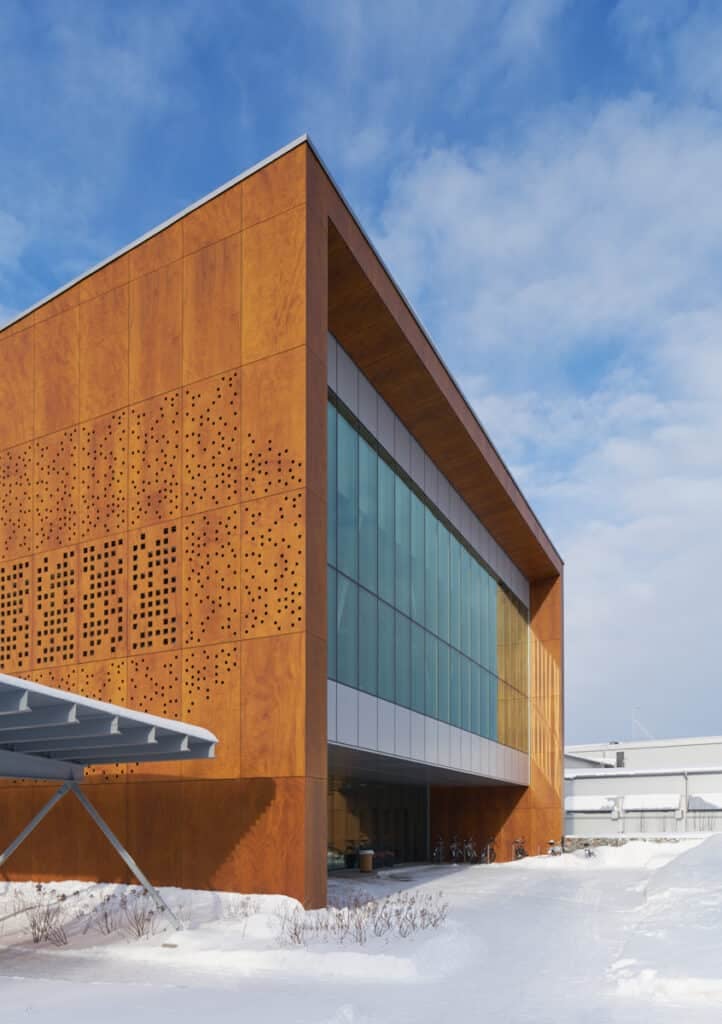
4. Exterior wood cladding systems
4.1. Natural wood panels for ventilated facades
Natural wood panels for ventilated facades represent one of the most advanced solutions for exterior cladding. This system combines the warmth and expressiveness of wood with the technical advantages of ventilated facades:
- Multilayer composition: A high-density core combined with treated natural wood veneers and specific protective coatings.
- Dimensional stability: Structural design that minimizes movement caused by changes in humidity and temperature.
- Enhanced resistance: Comprehensive protection against UV radiation, moisture, impacts, and biological agents.
- Variety of finishes: A wide range of wood species and textures to suit different architectural styles.
Ventilated facade panels also offer the inherent benefits of this construction system: improved thermal insulation, elimination of condensation and thermal bridges, and additional protection for the building envelope.
4.2. Natural wood plank systems
Natural wood planks offer a high-value aesthetic and architectural versatility:
- Design flexibility: They allow for varied rhythms, spacings, and orientations, creating dynamic and customized facades.
- Passive solar control: When properly oriented, they can contribute to the building’s bioclimatic performance by regulating solar incidence.
- Architectural integration: They facilitate continuity between different planes or elements of the building envelope.
- Installation options: Visible or concealed fastener systems based on the project’s aesthetic requirements.
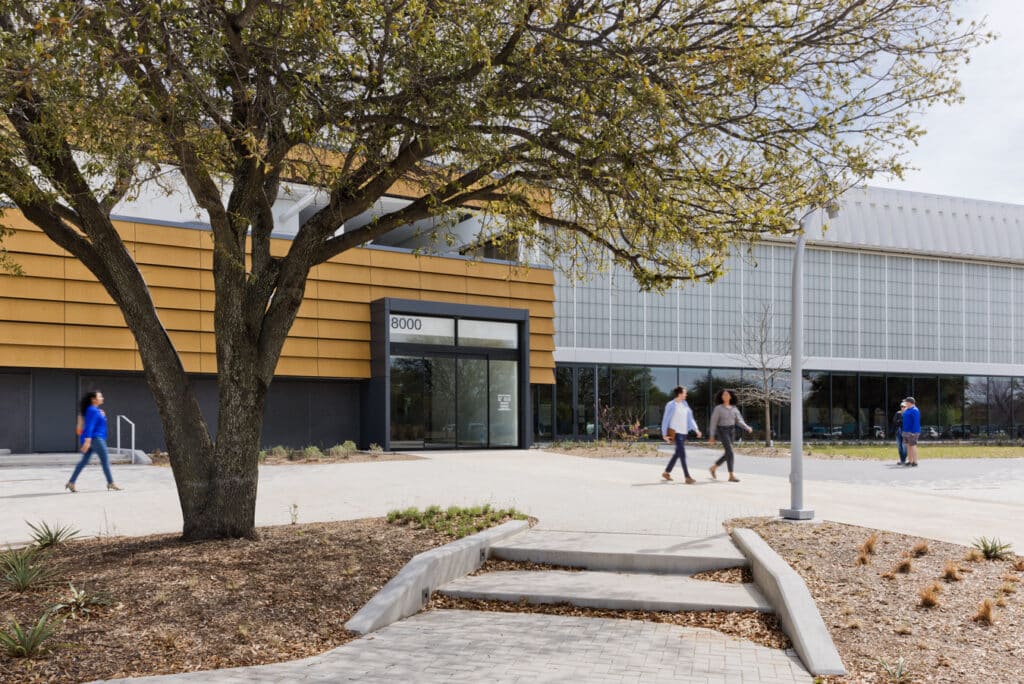
5. Technical considerations for specification and installation
5.1. Selection criteria based on architectural project
Choosing the most suitable wood cladding system requires considering multiple project-specific factors:
- Local climatic conditions: Temperature, humidity, solar radiation, and precipitation at the site.
- Facade orientation: Solar and rainfall exposure varies significantly depending on orientation.
- Building height: High-rise projects face more demanding conditions in terms of wind exposure and maintenance accessibility.
- Proximity to aggressive environments: Coastal, industrial, or highly polluted areas require special considerations.
- Local regulatory requirements: Particularly regarding fire performance and sustainability.
A detailed analysis of these factors enables the selection of the optimal technical solution, ensuring a balance between architectural expressiveness and long-term performance.
Parklex Prodema’s natural wood cladding systems meet the most stringent requirements of contemporary architecture thanks to their advanced multilayer technology. Their composition, featuring kraft papers impregnated with resins and an anti-graffiti PVDF coating, ensures optimal performance across various climatic conditions, facade orientations, and building heights, maintaining dimensional and chromatic stability without maintenance, even in aggressive environments such as coastal or highly polluted areas.
This technical adaptability is complemented by specific solutions for each context – from A2 fire-rated panels for buildings with specific requirements to mechanical fasteners for marine environments – supported by international certifications for both technical performance and environmental sustainability (PEFC/FSC). This provides a comprehensive response to the unique characteristics of each architectural project, regardless of its specific conditions.
5.2. Integration with other construction systems
High-performance exterior wood cladding systems are highly versatile but must be properly integrated with other components of the building envelope:
- Subframe compatibility: Considerations regarding materials, fasteners, and dimensional tolerances.
- Interface with joinery: Detailing for connections with windows, doors, and other facade elements.
- Integration of installations: Solutions for incorporating elements such as lighting, water drainage, or signage.
- Resolution of singular points: Corners, terminations, copings, and other details requiring specific solutions.
5.3. Installation process and practical considerations
Early coordination between the various systems and disciplines involved is essential to ensure an optimal technical and aesthetic outcome.
Proper execution of the system is as critical as its specification:
- Installation sequence: A step-by-step methodology to ensure correct system installation.
- Tolerances and adjustments: Allowable margins to accommodate structural and thermal movements.
- Specific tools and equipment: Requirements for proper handling and installation.
- Environmental conditions during installation: Considerations for temperature, humidity, and other variables that may affect the process.
Professional installation, following established technical guidelines, is the best guarantee for the system’s optimal performance throughout its service life.
The correct installation of advanced wood cladding systems requires robust technical support from the manufacturer to ensure the best results for each project. A comprehensive service, including personalized advice, project-specific technical calculations, detailed documentation, and the supply of all necessary accessories for each fastener system. This technical support ensures that every installation meets established quality standards and avoids complications in demanding architectural projects.
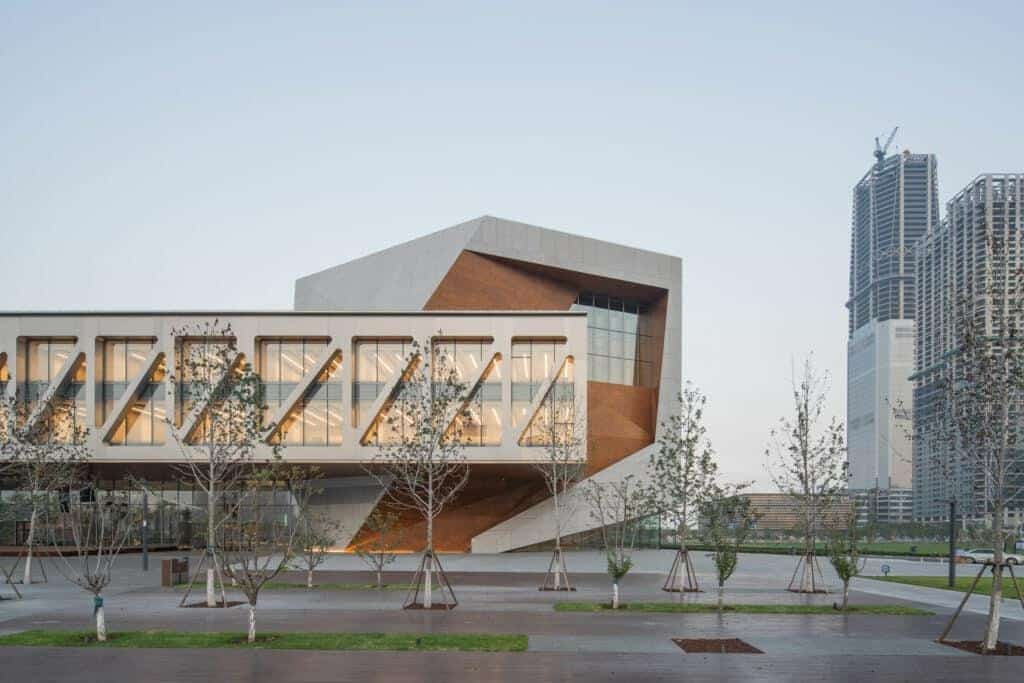
6. Durability and maintenance
6.1. Factors determining cladding durability
The durability of exterior wood cladding is influenced by multiple factors:
- Intrinsic system quality: Materials, treatments, and technology used in manufacturing.
- Context suitability: Appropriate system selection based on specific exposure conditions.
- Installation quality: Execution in accordance with established technical specifications.
- Usage conditions: Exposure to unforeseen factors or exceptional situations.
Parklex Prodema’s advanced wood cladding systems are designed to maximize durability even in demanding conditions, offering guarantees that can exceed 10–15 years, depending on the system and application.
6.2. Maintenance and preservation strategies
While contemporary wood cladding requires significantly less maintenance than traditional solutions, implementing an appropriate conservation program optimizes long-term performance:
- Periodic inspection: Visual checks to identify potential issues early.
- Basic cleaning: Non-aggressive procedures to remove dust and surface contamination.
- Preventive interventions: Specific actions recommended based on the cladding’s age and exposure conditions.
- Targeted restoration: Procedures to restore specific areas if needed, without affecting the entire system.
Proper maintenance not only extends the system’s lifespan but also preserves its aesthetic quality and architectural value over time.
6.3. Life cycle and sustainability considerations
Exterior wood cladding offers significant advantages from a full life cycle perspective:
- Favorable carbon balance: Wood acts as a carbon sink throughout its lifespan.
- Lower embodied energy: Compared to materials like aluminum, steel, or certain synthetic composites.
- Reuse and recycling possibilities: At the end of its lifespan, it offers favorable resource management options.
- Environmental certifications: Systems like PEFC or FSC ensure the sustainable sourcing of raw materials.
These characteristics make high-performance wood cladding a particularly suitable option for sustainable architecture and low-environmental-impact buildings.
7. Case studies and architectural applications
7.1. Residential buildings
Exterior wood cladding brings distinctive qualities to residential projects:
- Warmth and environmental connection: Especially valued in single-family homes in natural settings.
- Differentiation in residential complexes: A distinctive element that gives identity to collective developments.
- Rehabilitation and updating of existing buildings: Interventions that transform the architectural image while preserving the original structure.



7.2. Public and institutional buildings
The representational qualities of wood make it particularly suitable for public buildings:
- Cultural facilities: Museums, libraries, and cultural centers where material expressiveness is particularly significant.
- Educational buildings: Schools, universities, and research centers that benefit from wood’s warmth and biophilic value.
- Public institutions: Administrative buildings where sustainability and connection to nature reinforce their social significance.



7.3. Commercial and corporate architecture
The private sector finds added value in wood cladding:
- Corporate headquarters: Expression of company values related to sustainability, innovation, and well-being.
- Commercial spaces: Creation of welcoming environments that enhance the customer experience.
- Hospitality sector: Hotels and restaurants seeking differentiation and environmental quality.



8. Innovation and future of exterior wood cladding
8.1. Research and development directions
The field of exterior wood cladding continues to evolve through various research directions:
- New biomimetic treatments: Inspired by natural protection mechanisms.
- Integration of advanced functionalities: Energy generation, CO₂ capture, or air purification.
- Automation and prefabrication: Systems that optimize both production and installation.
- Digitalization and monitoring: Solutions enabling real-time tracking of material performance.
Parklex Prodema maintains a steadfast commitment to innovation, participating in research projects that explore these new possibilities.
8.2. Emerging trends in sustainable architecture
Wood cladding naturally aligns with emerging trends in sustainable architecture:
- Circular economy: Systems designed with a full life cycle perspective.
- Regenerative buildings: Beyond minimizing impacts, contributing positively to the environment.
- Climate change adaptation: Architectural responses to new climate scenarios.
- Connection to the local context: Revalorization of materials and techniques with territorial roots.
These trends point to a future where wood, as a renewable and low-impact material, will play an even more significant role in exterior architecture.
9. Technical resources for architects
9.1. Technical documentation and specification tools
To facilitate architects’ work in specifying exterior wood cladding, Parklex Prodema provides various resources:
- Detailed technical datasheets: Complete specifications for each system and component.
- CAD libraries: Parametric elements to facilitate integration into digital projects.
- Physical samples: Sample kits with different wood species and finishes for direct evaluation.
- Specific calculators: Tools for sizing components, estimating materials, and analyzing performance.
These resources are available through our website or can be requested directly from our technical department.
9.2. Personalized technical support
The Parklex Prodema technical team provides specialized support throughout all project phases:
- Design phase assistance: Guidance on selecting the optimal system, wood species, and finishes based on project requirements.
- Custom solution development: Adaptation of standard systems to meet specific project needs.
- Installation supervision: Technical assistance to ensure correct execution.
- After-sales service: Technical support and comprehensive documentation for maintenance-free product use.
This comprehensive support ensures architects can fully leverage the aesthetic and technical potential of exterior wood cladding with complete confidence.
10. Frequently asked questions about natural exterior wood cladding
What is the expected lifespan of Parklex Prodema’s exterior wood cladding?
Parklex Prodema’s exterior wood cladding systems are designed for a prolonged lifespan, often exceeding 15–20 years, depending on the specific system, project location, and exposure conditions. Thanks to advanced treatments and multilayer technology, our products maintain their aesthetic and functional properties throughout this period with minimal maintenance.
Do exterior wood cladding systems require frequent maintenance?
Unlike untreated traditional wood, Parklex Prodema’s cladding systems require minimal maintenance. There is no need for periodic varnishing, painting, or treatments to preserve structural integrity. Basic maintenance primarily involves occasional cleaning with water and neutral soap to remove surface dirt, preserving the aesthetic appearance for years.
How do exterior wood cladding systems perform in fire conditions?
Parklex Prodema has developed specific solutions with advanced fire reaction classifications, meeting the most stringent international regulations. Our fire-resistant panels, featuring a fiberglass core impregnated with synthetic resins and mineral fillers, are non-combustible and suitable for high-rise buildings and areas with strict fire safety requirements.
Can wood cladding be used in coastal areas or extreme climates?
Yes, Parklex Prodema’s advanced systems are designed to withstand demanding environmental conditions, including coastal areas with high salinity, high-altitude regions with significant thermal variations, or areas with intense solar radiation. Proper system selection and installation ensure optimal performance even in these challenging environments.
What environmental certifications support Parklex Prodema’s exterior wood cladding products?
Our products are backed by forest certifications such as PEFC and FSC, ensuring the sustainable sourcing of raw materials. Additionally, we provide Environmental Product Declarations (EPDs) that transparently document the environmental impact throughout the product’s life cycle, facilitating integration into projects pursuing sustainable building certifications like LEED, BREEAM, or WELL.
Can different wood finishes or species be combined in the same project?
Absolutely. Our product range allows for the combination of different species and finishes with full technical compatibility, offering architects extensive creative expression. Contrasts, patterns, or transitions can be created using various wood tones and textures while maintaining consistent technical performance across the entire system.
Do exterior wood cladding systems contribute to a building’s thermal insulation?
When installed as part of a ventilated facade system, wood cladding significantly enhances a building’s energy efficiency. The ventilated cavity improves the thermal performance of the building envelope, reducing heating and cooling needs in both summer and winter. Additionally, wood’s low thermal conductivity minimizes thermal bridges, contributing to interior comfort.
How does solar radiation affect the color and appearance of exterior wood over time?
The specific treatments applied to our high-performance cladding protect the wood from UV degradation, preserving its color and appearance for much longer than untreated wood.
Can exterior wood cladding be installed on existing buildings as part of a renovation?
Yes, Parklex Prodema’s cladding systems are particularly well-suited for energy retrofitting and aesthetic renovations of existing buildings. The lightweight panels, versatile fastener systems, and adaptability to existing subframes facilitate implementation without requiring significant structural interventions.
What technical support does Parklex Prodema offer during the design and installation process?
Our technical team provides comprehensive support throughout all project phases, from selecting the most suitable system to installation supervision. We offer detailed technical documentation, physical samples, CAD construction details, and assistance in developing customized solutions tailored to the specific requirements of each architectural project.






